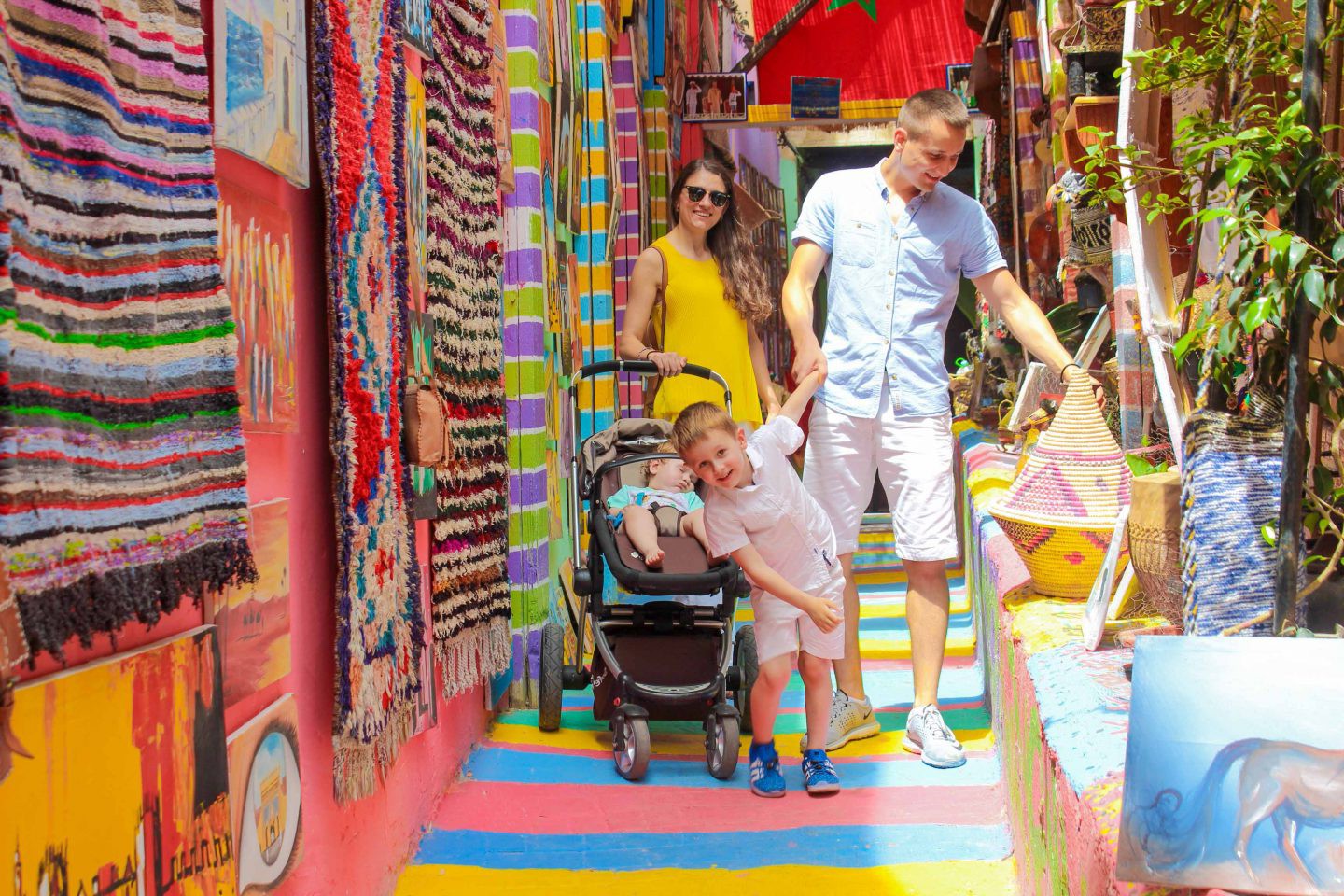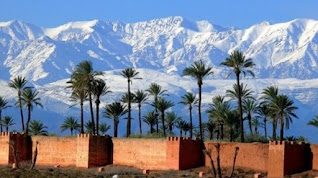Morocco, a North African nation lining the Atlantic Ocean and the Mediterranean Sea, is known for its social impacts of Berber, Arabian, and European. The Djemaa el-Fna square in Marrakesh's medina, a mazelike middle age territory, offers diversion just as souks (commercial centers) selling stoneware, adornments, and metal lamps. The Kasbah of the Udayas in Rabat, Morocco's capital, is a twelfth century illustrious fortification ignoring the water.
There are some notable beaches for all kinds of nautical activities between Al Hoceima, Tangier, Essaouira, and Agadir, so fans will find satisfaction there.
The Atlas mountain range, which rises over 4000 meters between the immense plains of the north and the desert of the south, runs through the country. The variety of scenery allows for a wide range of excursions: the palm groves of the Ziz valley and the dramatic gorges of Dades and Todgha in southern Morocco, for example.
Tourists can visit various communities built of adobe (a mixture of earth and straw) located on the mountainside during treks or mule rides in the Atlas.
With a rental car in Morocco, you may enjoy a change of scenery and new discoveries in towns. The imperial cities of Rabat, Fes, Meknes, and Marrakech must be visited first.
Visit the Roman ruins of Chellah in Rabat and Volubilis near Meknes; the medieval medina of Fes, a maze of narrow streets, majestic buildings, colorful booths, fragrant fragrances, alive with life and activities; Rabat's Oudayas neighborhood and its Kasbah; and Marrakech's famous Djema El Fna plaza. These cities are protected by ramparts and have stunning mosques such as Marrakech's Koutoubia (only Muslims can enter).
Casablanca, with its white structures built by the French at the turn of the twentieth century, is the Kingdom's major economic center, overshadowed by the Hassan II mosque.
an exhibition of Moroccan craftsmanship's diversity (which can be visited in groups). Tangier, on the edge of the Strait of Gibraltar, was once an international city; Larache is known for its whitewashed low houses with blue doors, and most of the tiny towns are worth a visit.
Morocco is a country with a temperate climate and a hot sun. Each region has its own season; you can spend Christmas in Marrakech and take advantage of the bathing pools, or escape to Ouarzazate in the early spring.
Take a siesta on the Mediterranean beaches in the shade of palm trees in the summer, and explore the imperial cities in the fall... The hotel inventory is sufficient to find space at all times of the year.
Moroccan culture and architecture are diverse. The zelliges (plaster bas-reliefs), the stucks, and the moucharabiehs are all worth seeing (wooden trellises on the windows, which had to hide people looking out.) You must witness the fantasias, with horse riders galloping and antiquated guns aimed towards the sky. You must listen to the sounds of the medinas, which are bustling with activity. The aromas of spice vendors and rose flowerbeds in southern Morocco must be experienced. You must try a pastilla in the company of warm hosts under a caidal tent. This country excites all of your senses in every direction! Morocco is a place where life is really good: the climate, the cultural riches, the sceneries, and the welcome are all excellent.
Ancestral cities, varied and hospitable coasts, warm mountains, desert, and beautiful palm groves make up a true cultural identity in the midst of a wonderful and rich country. Female djellabas have a radiance that rivals Moroccan compassion.
A trip to Morocco usually prompts a second, such is the urge to learn more about this fascinating country.
And finally, morocco is a country of dreams for the majority of the tourist who already visited it. You can also discover some informations about the famous touristic cities in morocco here
Like and share, that's make my day🤗
Welcome in chefchaouen the blue perle














0 Comments